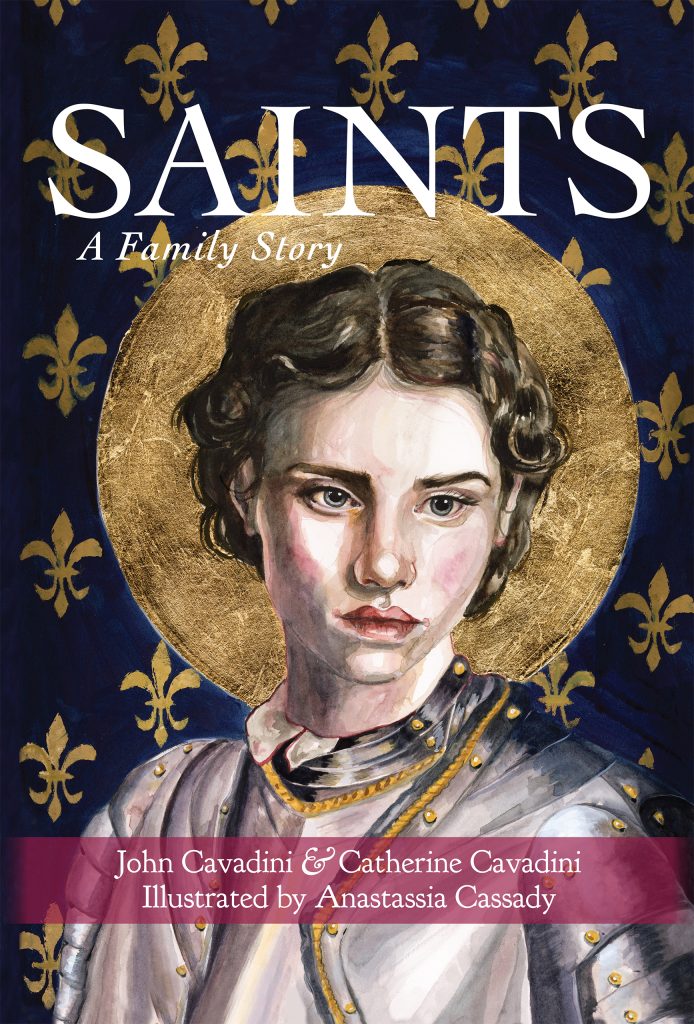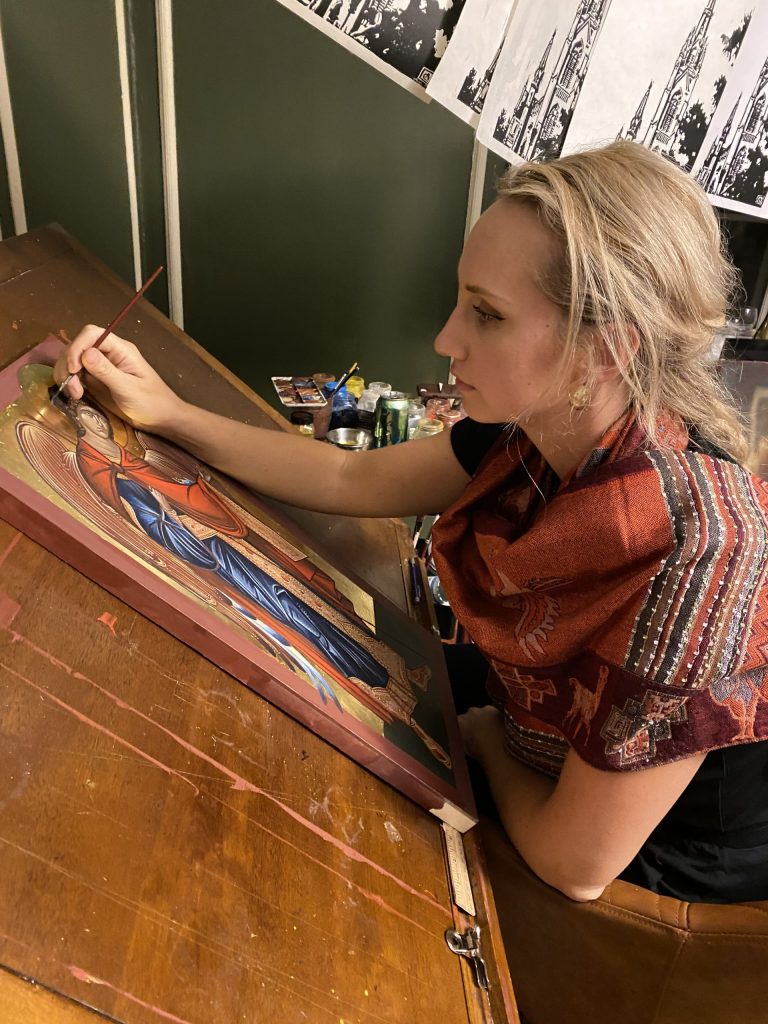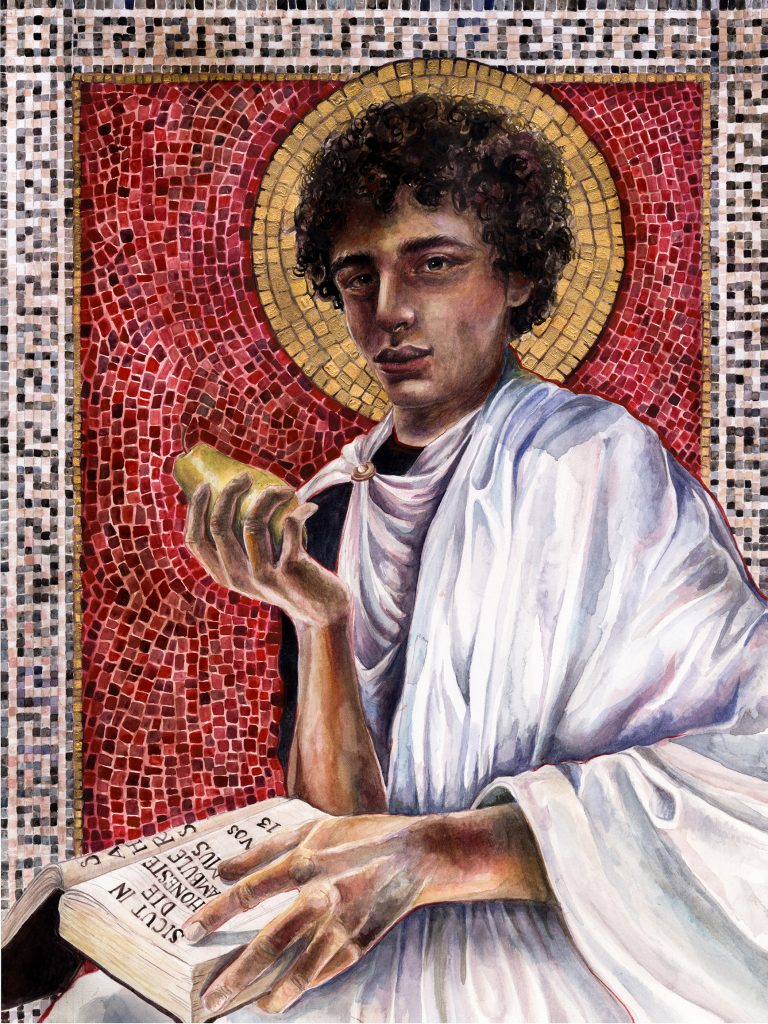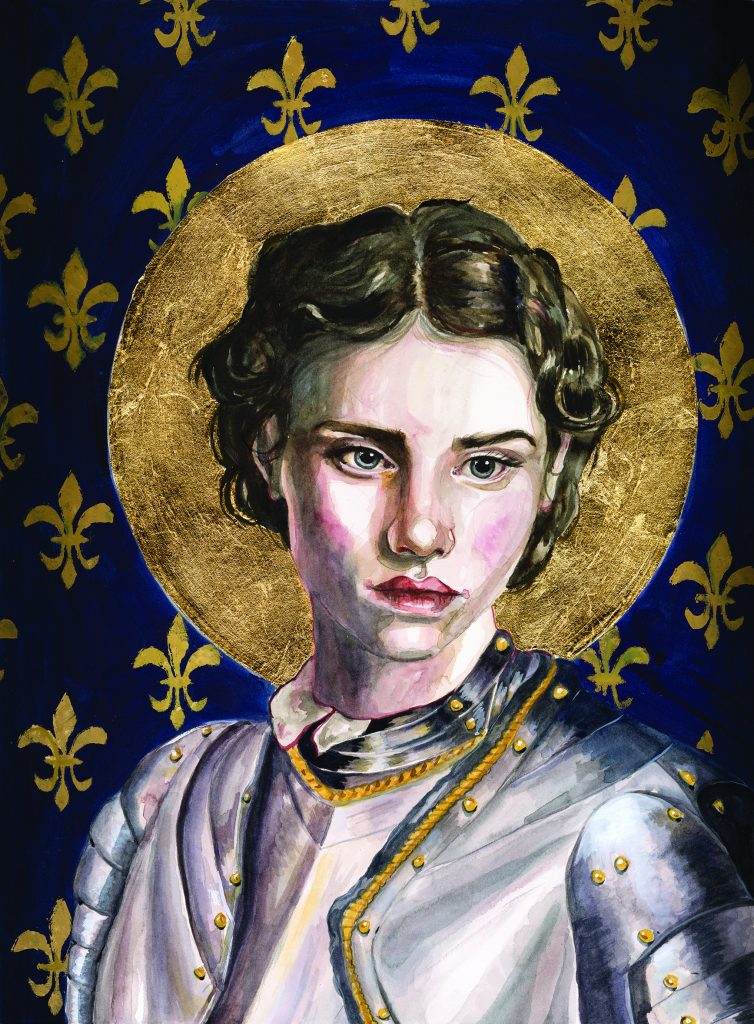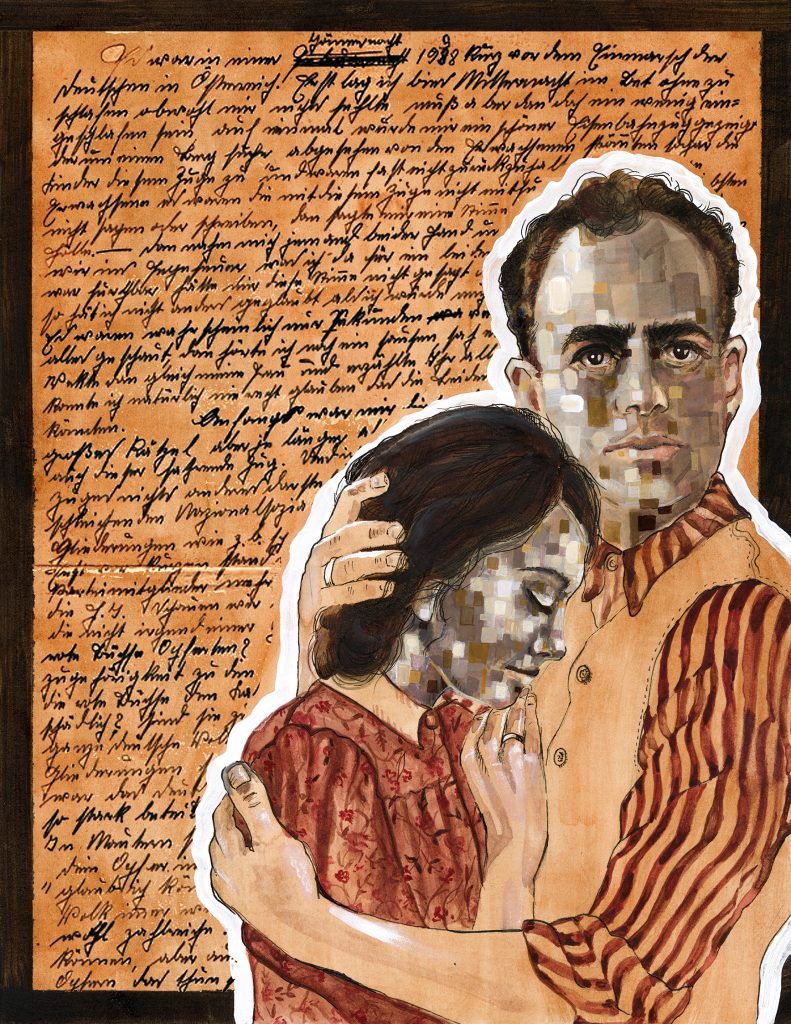October 24, 2023 // Diocese
Local Artist Helps Bring the Saints to Life in New Book
A doe-eyed woman, the gentleness of whose beauty is reminiscent of a lamb’s yet carries a quiet strength, looks wistfully downward, her thoughts elsewhere. Only once you’ve peeled your eyes away from her captivating face do you notice her suit of armor. She is St. Joan of Arc.
This striking image is on the cover of a new children’s book, “Saints: A Family Story,” written by the father-daughter team of Dr. John Cavadini and Dr. Catherine (Katie) Cavadini, both of whom are professors of theology at the University of Notre Dame.
When it came to finding artwork to accompany the stories in their book, John and Katie Cavadini collaborated with a longtime family friend and local artist, Anastassia (Tess) Cassady.
“One of our primary aims in writing these stories, especially the ones of ‘well-known’ saints, was to breathe new life into their stories, to allow their personalities to come to life … to let them be real people who loved God once upon a time in our history,” said Katie Cavadini. “Thus, what I appreciated most about working with Tess was the tender care she took when transfiguring these stories into images. She was so careful time and again to paint a portrait of the person as a saint, to make what is invisible about their life visible: communion with God in love. I just really enjoyed, therefore, sending a story off to Tess and getting an image in return. It was like hearing our stories in lines and shapes and colors. Or, better maybe, to have our stories looking back at us.”
Cassady, who is a Byzantine Catholic and is trained to write icons, likes to connect with God through activity, such as walking while praying the Rosary. She finds creating art to be a prayerful endeavor, and she enjoys the element-of-surprise inspiration from the Holy Spirit that infuses her work.
“The incredible thing about learning about a saint, or reading Katie and John’s stories,” she said, “is I would just have an image, based on their words and based on the rich culture and Tradition of the Church. A lot of times with sacred art, there’s this moment of ‘this is what I need to do’ and I’m not questioning, and I never usually redo anything, unless there’s a drastic need to. There’s just something beyond me.”
“For some of the saints, I would get goosebumps sometimes, and I was like, ‘I … have an image,’” Cassady said, describing the feeling of realizing how to portray the person. “Joan was my favorite. I had left her for later. I was like, ‘I just don’t know who she is.’ And I remember just starting to paint her, and knowing the light source — once you have a light source, if you’ve done portraiture enough, you know how light will affect certain crevices of faces. And I remember getting to a point where I’m like, ‘Oh my gosh, I see her. This is who I saw! This is who I saw in my heart!’ It was super late at night, and I was like, ‘This is who I want.’”
Cassady noted how much she trusted the Cavadinis as theologians, and that she learned a lot through the book, even about saints she thought she knew well, such as Joan.
“I always thought she was the one that was just, like, a [totally tough lady], just going in with a sword, but she never wielded a sword ever. She held all the dying soldiers, no matter what side they were on, and was so fiercely feminine in this beautiful way, that I’m like, ‘Wow, this is absolutely incredible,’” she said.
In the book, Joan’s childhood as a shepherdess is highlighted, and this informed Cassady’s portrait of her. “They wrote, in their story, that she was a shepherdess and she loved her sheep. She didn’t want to go – like many saints: They didn’t want to do it but were called. What would a woman look like who knows she has to do it but she just wants to be home? I really wanted to get that, of her just looking beyond – fierce, but kind of resigned, and maybe a little homesick.”
Joan’s portrait was also informed by research Cassady did in order to make her image decidedly French. This included studying the Olympic website to discern common French features, which are reflected in Joan’s eyes, lips, and cheekbones.
“Among the many things I like about Tess’s illustrations is that they are based on a close and attentive reading to the individual stories she was illustrating, and also based on art historical research regarding images and symbols commonly associated with any given saint,” John Cavadini said. “So they have both a particular significance, attuned to the emphases of the stories we wrote, but also a universal significance that connects our stories to the wider Catholic Church through the centuries. In addition, she has brought out the multicultural dimension of the saints whose lives are depicted, another way of making a connection to the Church that is truly universal.”
This universality is reflected in Cassady’s artwork throughout the book, including in the portrait of St. Augustine, who is depicted holding a pear and a book – symbols commonly associated with him – and who shares a story with his mother, St. Monica, who was Algerian.
While describing her portrait of Augustine, pointing to different details with her fingers, Cassady said: “That’s the only one I redid, because I had him originally looking more central African than northern African. I researched and talked to the leading Augustine scholars or read their quotes on what he would have looked like.”
In addition to the multicultural dimensions of the saints, the watercolor paintings also celebrate a variety of art influences. Although her preferred medium is oil painting, painting exclusively in watercolor for this project provided a new opportunity for Cassady.
“I’d never thought about doing religious artwork that way,” she said, “but it was fun to be able to do it quickly in that manner. We spent time figuring out what kind of illustrations we wanted for young kids and what we could do in the timeframe. We decided all the illustrations would be watercolor but each of a totally different design. So if the kid is like, ‘Oh, I really like this, what is this?’ the parent can be like, ‘That’s art nouveau; let’s look at some really cool art nouveau.’”
The portrait of Blessed Franz Jagerstatter, depicted holding his wife, Franziska, with one of his letters to her filling the background, was inspired by a number of styles and includes a strong influence from Egon Schiele – a favorite Austrian artist of Cassady’s who was a contemporary of Franz. The stripes on Franz’s shirt are a deliberate nod to Schiele.
“People he really admired always seemed to have stripes. I just love his stripes,” Cassady said, noting that the painting contains styles of artists that Hitler called degenerate, “so, Egon Schiele, and even modern impressionism – there are about five different types of artists [represented in it].”
As each piece of art draws you in through its own unique way, helping you to encounter the beauty of the saints’ lives, so, too, do the stories. Their opening lines are immediately engaging, such as: “Augustine was restless” or “Dangling in mid-air, Thomas sees his mother leaning out of the window, watching her son make his escape,” which opens the story of St. Thomas Aquinas. And each leaves the reader with much to contemplate about God’s love and how they may personally be called to share it.
The stories are short and concise, making it easy for young readers to read one a day, and Cassady has witnessed firsthand the power of the storytelling. She recalls a time she caught her oldest daughter unable to put the book down.
“I went in her room, it was after midnight, and I was like, ‘What are you doing?’ And she was like, ‘Maximillian Kolbe just got captured; I have to finish it!’ She has fallen in love with saints she never even knew because of their stories. It’s really cool to see little kids read these books. She’ll read Saint of the Day books, and they’re really beautiful, and they’re not harmful, but they never really elicited the wonder that the stories here did.”
“And they only used primary sources [to write the book], which is incredible,” Cassady said of the Cavadinis’ research. The back of the book contains a list of the books that were consulted to write the stories, offering adults a way to delve deeper into the lives of these saints.
Attentiveness to God’s voice, obedience, and a humble desire to share His love and give Him glory are hallmarks of the lives of the saints, and as an artist who gets to help to share their stories, Cassady holds a humble posture. Reflecting on painting religious artwork, she said: “It’s beautiful to not get praised for something but just see it do what needs to be done. You are the person that brings it into the world, but you are not important. There’s something really beautiful about focusing on the image itself.”
The best news. Delivered to your inbox.
Subscribe to our mailing list today.







